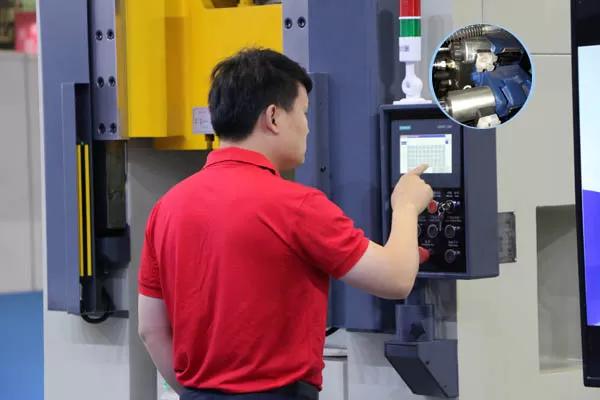Adjusting the flow of hydraulic pump
● Variable pump adjustment:
If the hydraulic press adopts variable pump oil supply system, the displacement of the pump can be directly adjusted to control the flow. For example, for axial piston variable pump, the output flow of the pump can be changed by changing the inclination angle of the swash plate. When the inclination angle of the swash plate increases, the displacement of the pump increases, the oil flow entering the hydraulic cylinder increases, and the working speed of the hydraulic press will increase; conversely, the inclination angle of the swash plate decreases and the speed slows down. This adjustment method has high accuracy and can achieve stepless speed regulation in a large range.
● Dosing pump with flow control valve:
For hydraulic presses supplied by dosing pumps, flow control valves such as throttle valves and speed control valves are usually used to adjust the speed. The throttle valve adjusts the flow by changing the flow area of the throttle port. For example, for a manually adjustable throttle valve, the adjustment handle is rotated to move the valve core, thereby changing the size of the throttle port. When the throttle port becomes larger, the resistance of the oil passing through decreases, the flow increases, and the speed of the hydraulic press becomes faster; however, the throttle valve is greatly affected by load changes, and the speed stability is slightly poor when the load changes. The speed regulating valve is based on the throttle valve. It uses a differential pressure reducing valve to compensate for the impact of load changes on the flow rate, so that the flow rate remains stable, thereby making the speed of the hydraulic press more stable.

Adjusting the structural parameters of the hydraulic cylinder
● Changing the effective working area of the hydraulic cylinder:
During the design stage of the hydraulic press, the speed can be adjusted by changing the inner diameter of the hydraulic cylinder. According to the formula (is the piston movement speed, is the flow entering the hydraulic cylinder, is the effective working area of the hydraulic cylinder), when the flow rate remains unchanged, the inner diameter of the hydraulic cylinder is reduced, the effective working area is reduced, and the piston movement speed will increase. However, this method is difficult to change after the hydraulic press is manufactured, and is generally used for the initial design and selection of the hydraulic press.
Control the valve opening in the hydraulic circuit
● Selection and adjustment of the neutral position function of the electromagnetic reversing valve:
The neutral position function of the electromagnetic reversing valve will affect the speed of the hydraulic press. For example, for the electromagnetic reversing valve with the M-type neutral position function, when the valve core is in the neutral position, the hydraulic pump is unloaded and the two chambers of the hydraulic cylinder are closed. In this case, the speed of the hydraulic press can be indirectly affected by controlling the time the valve core is in the neutral position. If you want the hydraulic press to restart quickly after stopping, you can choose the appropriate mid-position function so that the system pressure can be quickly established, thereby speeding up the restart speed.
● Proportional valve and servo valve adjustment:
Proportional valves or servo valves are used in some high-precision hydraulic press control systems. Proportional valves can adjust the flow proportionally according to the input electrical signal, and accurately control the valve opening by changing the input control current, thereby achieving precise control of the hydraulic press speed. The servo valve has higher control accuracy, it can quickly respond to tiny electrical signal changes, and has excellent dynamic performance. It is suitable for occasions with extremely high speed control accuracy requirements, such as some hydraulic equipment in the aerospace field or high-precision material forming hydraulic presses.


 +86-769-8306-1993
+86-769-8306-1993
 E-mail
E-mail
